This year, as part of a cross-promotion between Twitch Prime and Hearthstone, the first-ever Oktoberbrawl took place. Featuring six popular streamers divided into two teams, as well as a rule-set that was different from anything seen before, this mini-tournament had four weeks of matches from September 11th to October 6th, with the Oktoberbrawl Grand Finals taking place at TwitchCon on October 20th.
The premise of Oktoberbrawl was simple: All six players participating in the event would receive a fresh account, 10 Classic packs, and a Welcome Bundle. On the Monday of every week, the contestants would each receive 10 packs from two different expansions. Then, on Wednesdays, they would receive a percentage of the second group of packs based on how many times players using their team’s card back (which came for free with a subscription to Twitch Prime) won games in Ranked Play.
Because Oktoberbrawl was a partnership between Hearthstone and Twitch, the players chosen for this event were some of the highest profile streamers in Hearthstone right now: Dog, Thijs and J4CKIECHAN for Team Void, and Kripparrian, Reynad and Alliestrasza for Team Light. All six of these players have popular Twitch streams, which made them the perfect candidates for this competition.
Week One:
The excitement began on September 11th, when the contestants opened their first card packs and got to work building new decks with their very limited resources. Because of the Welcome Bundle and the 30 packs they were given, the players all were guaranteed to receive at least 4 Legendaries and a large variety of Epics, Rares and Commons, which would serve as the foundation of the decks they’d create.
On September 15th, Team Light and Team Void had their first showdown. Using their Basic and Classic cards, along with a small selection cards from Goblins vs Gnomes and The Grand Tournament, the players each brought three decks to use in this grudge match.
The first round of the day pitted Thijs of Team Void against Alliestrasza of Team Light. In the first game of this round, Thijs played an Aggressive Mech Shaman against Alliestrasza’s Midrange Hunter. Thanks to the superior tempo tools present in the Shaman class, Thijs took a commanding early game lead over the Hunter. Alliestrasza actually nearly managed to come back, but then Thijs top-decked the lethal Lightning Bolt, putting the series score to 1-0.
In the second game, Thijs attempted to run a Control Priest, but Alliestrasza was on the verge of beating him with her Mech Mage when she suddenly lost connection. This forced the players to restart the game, but Alliestrasza’s deck was still better, and she soundly defeated him once again to tie the series 1-1.
Mech Mage made another appearance in the final game of the first round, as Thijs played it against Alliestrasza’s Zoo Warlock. For a while, the two players battled back and forth fairly evenly, but then Thijs managed to take a commanding board lead, and he took the series 2-1.
In the second round of the first day, Reynad of Team Light battled against J4CKIECHAN of Team Void. The first game of this round marked the third appearance of Mech Mage so far, as Reynad ran it against J4CKIECHAN’s Control Paladin. Traditionally a very favorable matchup for the Mage, the lack of powerful control cards in J4CKIECHAN’s deck only served to exacerbate this issue, and Reynad quickly won to go ahead in the series, 1-0.
In the next game, J4CKIECHAN brought out a Zoo Warlock against Reynad’s Shaman. This game should have been somewhat close, but Reynad failed to draw any early-game cards, which led to J4CKIECHAN easily taking the match, which brought the series score to 1-1.
In the final game of the second round, Reynad played a Control Paladin against J4CKIECHAN’s Midrange Druid. Reynad had a lot of powerful control cards, but he was unable to keep up with the power J4CKIECHAN managed to generate thanks to several lucky—or unlucky if you were supporting Team Light—jousts. Despite this, Reynad still nearly managed to come back in the game, but then J4CKIECHAN top-decked a Savage Roar to win the game and take the match 2-1.
The final round of the first day pitted Kripparrian, a streamer well known for his success in the Arena, against Dog, who is famous for not taking his shirt off. In the first game of this round, Kripparrian played a basic Zoo Warlock, while Dog ran the fourth Mech Mage of the day. This game was very back-and-forth until Dog pulled a Roaring Torch off the top of his deck at just the right time to win the match and take a lead in the series, 1-0.
The second game of the final round featured the first and only mirror match of the day, as two Mech Shamans went toe-to-toe. This should have meant that it would be a close game, but that couldn’t have been further from the truth, as Kripparrian shot off to an early lead and never looked back, tying up the series 1-1.
Mech Mage returned one last time for the final game of the day, as Kripparrian played it against Dog’s Aggro Warrior. In every game of the day up to this point, Mech Mage had easily triumphed over its opposition—however, after a pair of Kripparrian’s Spellslingers gave Dog the perfect cards for the situation at hand, the Aggro Warrior brought out Leeroy Jenkins to seal the game and take the series, 2-1.
Week 1 VOD — https://go.twitch.tv/videos/174956832
Week 2:
The second week of Oktoberbrawl began on September 18th. This week, the contestants were given Whispers of the Old Gods and Mean Streets of Gadgetzan card packs to add to their arsenal, in preparation for the second grudge match, which took place on September 22nd.
In the first round of the second week, Reynad battled against Thijs in an attempt to reverse the course of the first week. At first, it looked like he’d succeed, as his Zoo Warlock got off to a quick start against the Mech Shaman Thijs was running. Unfortunately, however, Reynad ended up running out of steam about halfway through the match, and Team Void took a 1-0 lead in the series.
In the second game of the first round, Mech Mage returned once more, as Reynad took on a Control Paladin from Thijs. As Reynad had experienced in the first week, Mech Mage is very strong against Control Paladin, and he managed to defeat Thijs and tie the series, 1-1.
In the final match of the first round, Reynad brought out an Aggro Shaman against yet another Mech Mage. Mech Mage had only lost one game in this entire competition, and this success continued, as its powerful tempo plays drowned out Reynad’s minions to take the series 2-1.
With Thijs’s victory, Team Void had won 4 games in a row, which meant that it was up to Kripparrian to turn things around for Team Light against J4CKIECHAN. Fortunately, Kripparrian had the tools to do just that, as he brought out the Mech Mage once more against J4CKIECHAN’s Aggro Rogue. Like it had done so many times before, the Mech Mage absolutely dominated the match, and Kripparrian took the Rogue down to take an early 1-0 lead in the series.
In the second game of the round, Kripparrian ran a Mech Shaman against what appeared to be a Zoo Warlock. However, J4CKIECHAN’s deck soon showed its true face, as he played the infamous Renounce Darkness. Transforming all of the Warlock Cards in his deck into random Shaman cards that cost one less than normal, J4CKIECHAN attempted to out-tempo Kripparrian with a swarm of cheap cards. Unfortunately, J4CKIECHAN ended up drawing a bunch of low-impact cards, which led to Kripparrian taking the first series win for Team Light in a 2-0 victory.
In the final round of the second day, Alliestrasza took on Dog in a match that would determine who would win the week. In the first game, Mech Mage made yet another appearance, as Alliestrasza used it against Dog’s Aggro Shaman. Up to this point, Mech Mage had only lost one game in the entire competition, but Dog managed to out-tempo Alliestrasza in the early game, which led to her defeat.
Things were looking bad for Team Light, but then, Alliestrasza brought out a C’thun Druid against Dog’s Midrange Hunter. Thanks to the massive Taunt minions included in this deck—and the Coins from a Cutpurse she pulled out of a Piloted Shredder—Alliestrasza shut down Dog’s aggression and tied up the series 1-1.
In the final game of the second week, Alliestrasza played a Mech Hunter against Dog’s Mech Mage. One of the closest games of the entire competition so far, this match went back and forth between the two for several turns until Alliestrasza managed to secure the board with a Houndmastered Carrion Grub. Two turns later, she crushed the Mage with a charging King Krush, and she took the series 2-1 for Team Light.
Week 2 VOD — https://go.twitch.tv/videos/176667021
Week Three:
The third week of the Oktoberbrawl started on September 25th, as cards from Journey to Un’Goro and Knights of the Frozen Throne were brought into the mix. Packs were opened, decks were modified, and then, on September 29th, the third grudge match began.
For the third week in a row, Reynad was the starter for Team Light, going up against Dog in the first round. In the first match of the day, Reynad played a Zoo Warlock against a Shaman Deck that the casters referred to as ‘Melting Pot Shaman’, because of all the different tribes it featured. Thanks to a wide selection of powerful early-game cards, Reynad shot off to a quick lead in this match, but Dog managed to come back (thanks to a pair of cheap Things From Below and an Invocation of Air from Kalimos), before sealing the match with an army of Totems to gain the series lead 1-0.
In the second game of the first round, Reynad played Mech Mage against a Control Paladin from Dog. In both of the occasions when this matchup had appeared in earlier weeks, it went very well for the Mech Mage, and this was no exception, as Reynad managed to take the game and tie up the series 1-1.
Mech Mage made yet another appearance in the final game of the first round, as Dog played it against a Control Warrior from Reynad. Back in the day, this was a fairly even matchup—however, in this game, Dog used a Micro-Machine to gain a quick damage advantage and he finished off his opponent on turn 6 with a Fireball-Frostbolt combo to take the first series 2-1.
With Reynad falling yet again, it was now time for the second round, where Alliestrasza took on J4CKIECHAN. In the first game, Alliestrasza brought out a Mech Shaman against a Midrange Token Paladin from J4CKIECHAN. Despite having better cards overall, Alliestrasza was unable to deal with the wide boards J4CKIECHAN created, and she ended up falling in defeat, which gave J4CKIECHAN a 1-0 lead in the series.
In the second game, Alliestrasza brought out her Midrange Mech Hunter from week two against J4CKIECHAN in the hopes of evening the series. Unfortunately, J4CKIECHAN decided to play a Mech Shaman, which absolutely tore apart the Midrange Hunter and gave Team Void the series win, 2-0.
These defeats put Team Light out of contention for the day, but there was still one round to go, as Thijs took on Kripparrian. In the first round of this final match, Thijs pulled out the Mech Handbuff Paladin against Kripparrian’s Mech Shaman. Thanks to an early Grimestreet Outfitter, Thijs was able to generate a lot of pressure early and nearly secure the game. At the last moment, however, Kripparrian used Thrall, Deathseer to turn an injured 6-mana minion into a charging Grommash Hellscream, which quickly won the game for the Shaman and put Kripparrian up 1-0.
In the next game, Thijs brought out a Control C’thun Druid in an attempt to control the game. This turned out to be utterly impossible, however, as Kripparrian fielded a heavily tuned Control Warlock that ran every board clear in the game, along with the mighty Lord Jaraxxus. Preventing Thijs from ever developing any kind of pressure, Kripparrian took complete control of the board and eventually took the game to win the series 2-0.
Even though Team Light had failed to win the day, Kripparrian had played really well yet again, which was a ray of hope for the future.
Week 3 VOD — https://go.twitch.tv/videos/178382750
Week Four:
In week four—which began on October 2nd—the players did something different. Instead of getting cards from one of the expansions, the contestants were allowed to play one Adventure of their choice for a short period of time in an attempt to collect a few more powerful cards. For example, Kripparrian played through the first several wings of One Night in Karazhan, while Alliestrasza ran through League of Explorers.
The grudge match for week four occurred on October 6th, and the first round began with Kripparrian of Team Light battling against Dog from Team Void. In the first game of this round, Kripparrian decided to play a Control Priest with lots of healing, Taunts and board clears, while Dog used a basic Aggro Shaman. For a while, this game was very close, but eventually, Dog managed to break through Kripparrian’s wall to take him out and secure the lead in the series, 1-0.
The second game of the first round was a Warlock mirror match, as Kripparrian played his Control Warlock from week three against Dog’s Hobgoblin Warlock. Combining cheap cards such as the Murloc Tinyfin or the Wisp with the powerful Hobgoblin effect, Dog consistently got onto the board—only to be driven off by Kripparrian’s powerful board clears. For a while, Dog tried to hang in the game, but it wasn’t long before he ran out of resources and was defeated, evening the series to 1-1.
In the third game of the first round, Mech Mage popped its head up once again in opposition to Kripparian’s Mech Shaman. For a match between two Aggro Decks, this game was actually surprisingly back and forth, until Dog finally secured the game with a Fireball and Fireblast combo to take the series 2-1.
In the second series of the day, Reynad took on Thijs in a rematch of the first week of the competition. In the first round of the match, Reynad brought out the Mech Mage against a Mech Shaman from Thijs. While Mech Mage is very strong at getting onto the board, it also struggles heavily if it ever runs out of resources, which is a situation Reynad found himself In about halfway through the game. Overwhelmed by Thijs’s big minions, Reynad attempted to fight back, but it wasn’t good enough, and he went down thanks to a top-decked Fire Elemental.
This put Team Void up 1-0 in the standings for this game, but Reynad wasn’t done yet, as he brought an Aggro Shaman to battle against Thijs’s Control Paladin. Despite an early lead in this game, however, Reynad just wasn’t able to maintain his control of the board (an issue that plagued him throughout the entire event), and he was eventually taken down by Thijs, who went 2-0 in the series.
In the final round of the fourth week, Alliestrasza took on J4CKIECHAN, who was trying out something a bit different with these decks. In the first game, Alliestrasza ran a Reno Paladin against a Control Priest from J4CKIECHAN in what was probably the slowest game of the entire event. Lasting for more than twenty minutes, it went all the way into fatigue before Alliestrasza was finally defeated, and J4CKIECHAN jumped to a 1-0 lead in the series.
In the second-to-last game of the final regular day, Alliestrasza pulled out the Mech Mage one last time, while J4CKIECHAN played a Control Druid of some kind. Unlike in the previous game, however, J4CKIECHAN ran out of ways to deal with Alliestrasza’s minions, and he was beaten into submission by a tide of damage, tying up the series 1-1.
With all these games in the book, it was now time for the final match of the fourth week. Alliestrasza was all ready for this, as she brought out a Reno Control Paladin. After week two, everyone was expecting some kind of crazy antics from J4CKIECHAN, so there weren’t that many that were surprised when he brought Renounce Darkness once again. However, when J4CKIECHAN transformed into a Shaman and actually began winning the game, everything changed.
Alliestrasza was simply unable to keep up with the high tempo J4CKIECHAN was managed to put out, so in the end, he and his Renounce Darkness Warlock managed to take Alliestrasza down and secure the 2-1 victory over Team Light.
Week 4 VOD — https://go.twitch.tv/videos/180157483
TwitchCon
Even though Team Void was ahead 3-1 in the weekly grudge matches, they had not yet won the tournament. If they truly wanted to triumph in the Oktoberbrawl, they would have to defeat the members of Team Light in one last match at TwitchCon, which would take place on October 20th.
Both teams were gearing up for this final confrontation, but then, a real-life disaster struck for Team Light. On October 17th, just days before the final matches of Oktoberbrawl, Kripparrian—who up to this point had been the one bright spot on his team—came down with a case of acute appendicitis. Fortunately, he was able to get to the hospital before any permanent damage was done, but this meant that he would be unable to travel to TwitchCon for the championship.
Team Light was forced to scramble for a worthy replacement for the Arena Master, and they found it in the form of Disguised Toast. One of, if not the most popular Hearthstone streamer on Twitch right now, Disguised Toast was the perfect choice to take Kripparrian’s place.
On October 20th, the final showdown between Team Light and Team Void began. Now, in this final best of three, there was an added twist thrown in. For every week that a team won, they’d get to give a member of the opposing team a sabotage. As Team Void had won the opening rounds 3-1, they got to give all three members of Team Light a sabotage, while Team Light only had one to apply to Team Void.
In the first game of the Oktoberbrawl Championships, Reynad ran a Control Rogue against Dog’s Hobgoblin Warlock. Team Light used their only sabotage in this game (forcing Dog to dress as a Murloc while playing) while Team Void used the first of their three (by making Reynad play with heavy gauntlets).
Dog got off to a quick start in this game, playing a Hobgoblin and three 1-attack minions on turn three for a very powerful board. Unable to deal with this board, Reynad took a lot of damage up to turn 6, when he used a Gadgetzan Auctioneer and a bunch of 0-mana spells to deal with Dog’s board. Unfortunately, Dog was able to build up a board once more, and he dropped Reynad all the way to 2 health—but then, Reynad pulled out the Yogg-Saron.
In a flurry of spells, Yogg-Saron destroyed Dog’s biggest minion and cleared the rest of his board (with the exception of a 0/2 Nat Pagle). Things were looking great for Reynad, but then, with the final spell, Yogg-Saron gave Dog’s Nat Pagle a Blessing of Kings. Reynad had no way to clear the now 4/6 minion, and he ended up losing on the following turn, giving Team Void the lead, 1-0.
In the second game of the championship, Disguised Toast took on J4CKIECHAN. Playing in place of Kripparrian, Disguised Toast brought out the Control Warlock, while J4CKIECHAN played his Renounce Darkness Warlock. Team Void also applied the second of their three sabotages in this game, which meant that Disguised Toast was only given thirty seconds to play each turn.
This game started slowly enough, but the excitement factor jumped to eleven on turn four, as J4CKIECHAN played Renounce Darkness and transformed his Warlock deck into a Priest deck. Leveraging the tempo lead gained by the reduced cost of his Priest cards, J4CKIECHAN took control of the board for a bit, but then, Toast managed to clear his minions with the help of Mogor the Ogre and a powerful Defile.
A couple turns later, Disguised Toast transformed his hero into Lord Jaraxxus, only to discover that J4CKIECHAN had a few surprises of his own. Using Shadowform (the Classic card, not the Knights of the Frozen Throne Hero Card), J4CKIECHAN began chipping away at Jaraxxus’ health, while using some board clears stolen from Disguised Toast’s deck to help defend against the Infernals summoned by Jaraxxus’ Hero Power. For several turns, it was a very tight game, but then, J4CKIECHAN failed to make the correct read on the potential burst damage in Disguised Toast’s hand, and he was defeated.
With the series tied 1-1, everything came down to the final game, where Thijs’s Control Paladin faced off against Alliestrasza’s Burn Mage. Using their third and final sabotage, Team Void forced Alliestrasza to say a Mage emote at the beginning of every turn. Fortunately, Alliestrasza was up to the task, ably reciting Jaina’s emotes as she progressed through the game.
Starting out strong, Alliestrasza seized control of the board, using her hero power and cheap removal spells such as Flamecannon to deal with Thijs’s minions. Moving into the mid-game, she started playing Ethereal Conjurer’s to discover more spells and reload her hand in preparation for a late-game Antonidas.
Unfortunately, this is where everything went wrong. Thijs was able to get a Bonemare on the board, which he promptly buffed into a 10/10 with Blessing of Kings. Alliestrasza managed to deal with this minion by freezing it with a Frost Bolt, but this was only a temporary solution, as Thijs built up a massive board with Sunkeeper Tarim. Alliestrasza did everything she could, but it wasn’t enough, and in the end, she fell to the relentless onslaught from Thijs.
With this victory, Team Void won the series and the entire Oktoberbrawl. Despite their defeat in the end, however, Team Light played really well, and overall, this was one of the most entertaining Hearthstone tournaments that I’ve seen. Hopefully, Blizzard takes some cues from this when designing events in the future (although preferably without requiring players to buy into Twitch Prime), as it could open up a lot of fun options!
TwitchCon VOD — https://go.twitch.tv/videos/183741742 (Starts 32 minutes in)

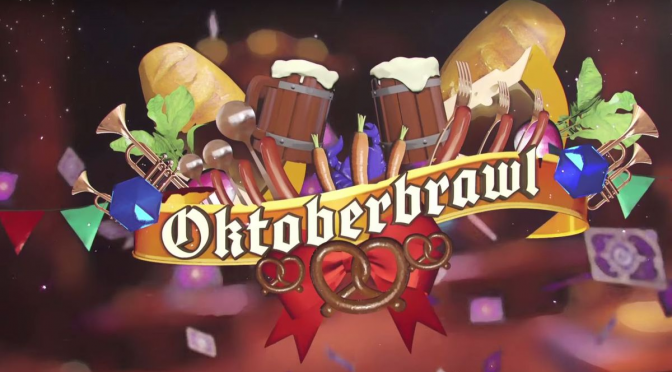
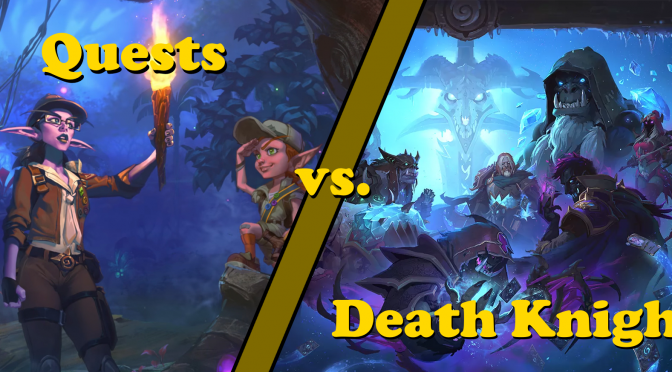
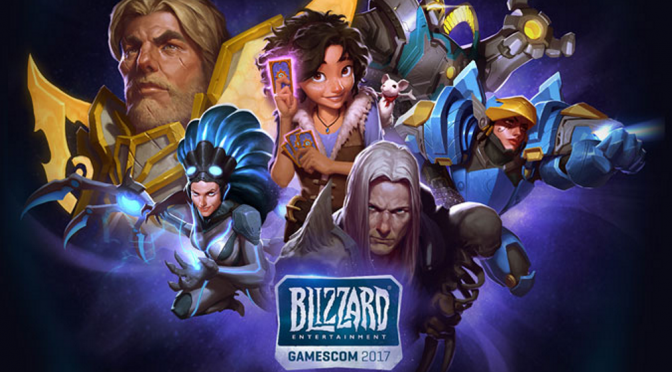
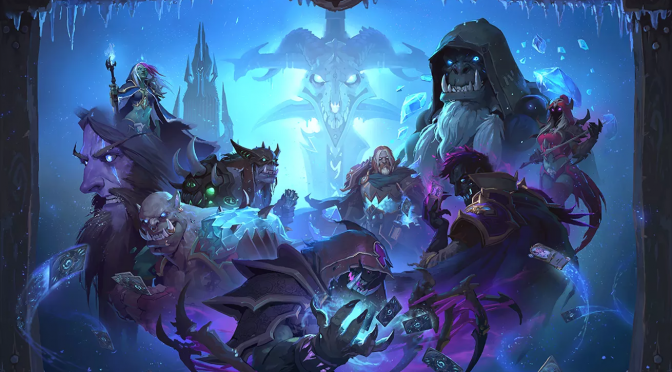
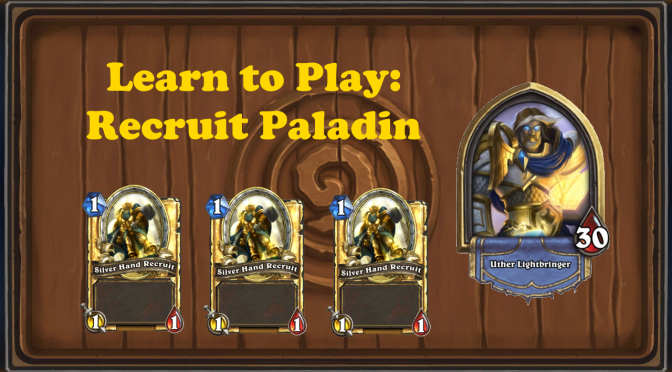

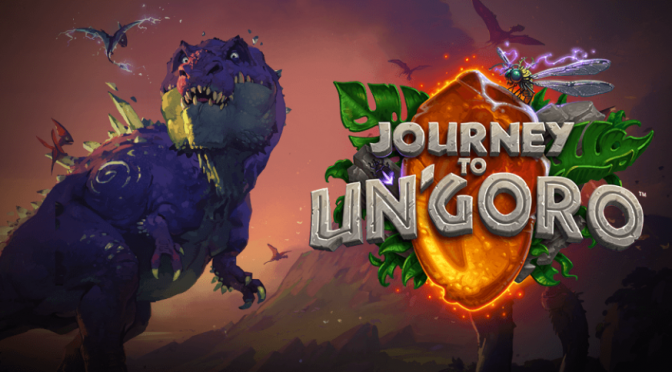





 Despite the obvious synergies, however, Lakkari Sacrifice has been absent from nearly all Warlock decks, and Clutchmother Zavas is rarely seen as well. There are many reasons for this neglect—however, the biggest is that the cards simply don’t work well enough. Lakkari Sacrifice isn’t a powerful enough Quest Reward, and Clutchmother Zavas—while powerful—isn’t as strong as many Legendaries.
Despite the obvious synergies, however, Lakkari Sacrifice has been absent from nearly all Warlock decks, and Clutchmother Zavas is rarely seen as well. There are many reasons for this neglect—however, the biggest is that the cards simply don’t work well enough. Lakkari Sacrifice isn’t a powerful enough Quest Reward, and Clutchmother Zavas—while powerful—isn’t as strong as many Legendaries.

 centers around completing the Warlock class quest, Lakkari Sacrifice. Lakkari Sacrifice requires you to discard six cards, and if you do, you receive the powerful Nether Portal (which summons a pair of 3/2 Imps at the end of your turn). The Nether Portal cannot be destroyed—even with complete Board Clears like Twisting Nether—so once you get it out onto the board, you’ll gain a lot of tempo for the rest of the game.
centers around completing the Warlock class quest, Lakkari Sacrifice. Lakkari Sacrifice requires you to discard six cards, and if you do, you receive the powerful Nether Portal (which summons a pair of 3/2 Imps at the end of your turn). The Nether Portal cannot be destroyed—even with complete Board Clears like Twisting Nether—so once you get it out onto the board, you’ll gain a lot of tempo for the rest of the game. The second deck I played, Elemental Paladin isn’t the most obvious archetype for the class. Despite this, the deck was actually surprisingly successful, due to a few interesting interactions.
The second deck I played, Elemental Paladin isn’t the most obvious archetype for the class. Despite this, the deck was actually surprisingly successful, due to a few interesting interactions. Shield and minions such as the Kabal Talonpriest to empower Adapted minions. The deck’s main win condition is the Vicious Fledgling, a 3-mana 3/3 that Adapts every time it attacks a hero. If this card can stay alive for more than a turn or two, it quickly becomes unmanageable.
Shield and minions such as the Kabal Talonpriest to empower Adapted minions. The deck’s main win condition is the Vicious Fledgling, a 3-mana 3/3 that Adapts every time it attacks a hero. If this card can stay alive for more than a turn or two, it quickly becomes unmanageable. Control Elemental Shaman forgoes playing many of the smaller Elementals in favor of massive minions such as the Earth Elemental (a 5-mana 7/8 with Taunt that Overloads for 3). Once these minions are established, it then uses cards such as Ancestral Spirit and Faceless Shambler to maintain the wall.
Control Elemental Shaman forgoes playing many of the smaller Elementals in favor of massive minions such as the Earth Elemental (a 5-mana 7/8 with Taunt that Overloads for 3). Once these minions are established, it then uses cards such as Ancestral Spirit and Faceless Shambler to maintain the wall.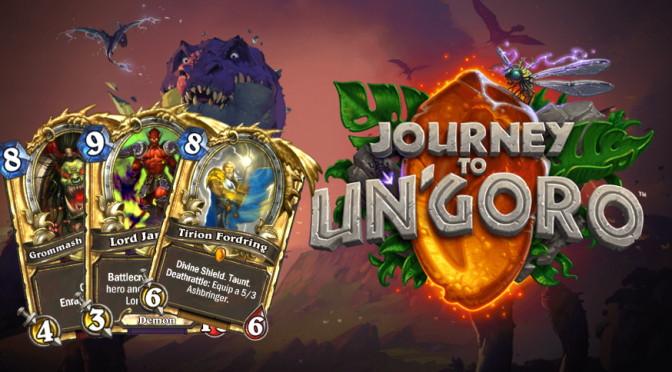

 Hunter: King Krush
Hunter: King Krush
 Paladin: Tirion Fordring
Paladin: Tirion Fordring
 Rogue: Edwin VanCleef
Rogue: Edwin VanCleef
 Warlock: Lord Jaraxxus
Warlock: Lord Jaraxxus

 Once the Quest is completed, Druids receive Barnabus the Stomper, a 5-mana 8/8 with Battlecry: Reduce the Cost of minions in your deck to (0). Needless to say, this is an incredibly powerful effect for Druids, as their minions are often on the high end of the mana curve.
Once the Quest is completed, Druids receive Barnabus the Stomper, a 5-mana 8/8 with Battlecry: Reduce the Cost of minions in your deck to (0). Needless to say, this is an incredibly powerful effect for Druids, as their minions are often on the high end of the mana curve.
 The Marsh Queen is a solid Quest that fits into both Aggro and Midrange Hunter. These decks both struggle with running out of resources, so the Raptors you get from the reward are perfect for winning a tight game.
The Marsh Queen is a solid Quest that fits into both Aggro and Midrange Hunter. These decks both struggle with running out of resources, so the Raptors you get from the reward are perfect for winning a tight game.
 the Mage completes the Quest, things get even crazier, as the reward is the powerful Time Warp.
the Mage completes the Quest, things get even crazier, as the reward is the powerful Time Warp.
 As for the reward, Paladins get Galvadon, a 5-mana 5/5 with Battlecry: Adapt 5 times. This is an incredibly powerful effect, as possible Adaptations include Stealth, Windfury and +3 Attack. Put all these together, and you get a 14/5 minion with Stealth and Windfury, which is capable of putting out 28 damage in one turn.
As for the reward, Paladins get Galvadon, a 5-mana 5/5 with Battlecry: Adapt 5 times. This is an incredibly powerful effect, as possible Adaptations include Stealth, Windfury and +3 Attack. Put all these together, and you get a 14/5 minion with Stealth and Windfury, which is capable of putting out 28 damage in one turn.
 The problem with Awaken the Makers, however, is the reward: Amara, Warden of Hope. A 5-mana 8/8 with Taunt, Amara’s Battlecry sets your hero’s Health to 40. Now, at face value, this is very good—however, in many games, ten extra Health won’t actually make a big difference. Priest is losing several of their most powerful control cards, and they aren’t getting anything to fill the void. As a result, if a Priest falls behind on board, they will struggled to regain control, and they’ll die from 40 as easily as they’d die from 30.
The problem with Awaken the Makers, however, is the reward: Amara, Warden of Hope. A 5-mana 8/8 with Taunt, Amara’s Battlecry sets your hero’s Health to 40. Now, at face value, this is very good—however, in many games, ten extra Health won’t actually make a big difference. Priest is losing several of their most powerful control cards, and they aren’t getting anything to fill the void. As a result, if a Priest falls behind on board, they will struggled to regain control, and they’ll die from 40 as easily as they’d die from 30.
 5/5 for the rest of the game. This includes minions on your board, in your hand, in your deck and even tokens that are summoned by other minions!
5/5 for the rest of the game. This includes minions on your board, in your hand, in your deck and even tokens that are summoned by other minions!
 Now, while Murloc Shaman has always been a potentially powerful deck, there’s been one main factor that holds it back: the lack of resources. Fortunately, this problem is completely solved by the Quest reward, a Murloc named Megafin. A 5-mana 8/8, Megafin’s Battlecry fills your hand with random Murlocs. This is an incredibly powerful effect, as it gives Murloc Shaman the extra fuel they need to finish their opponents off.
Now, while Murloc Shaman has always been a potentially powerful deck, there’s been one main factor that holds it back: the lack of resources. Fortunately, this problem is completely solved by the Quest reward, a Murloc named Megafin. A 5-mana 8/8, Megafin’s Battlecry fills your hand with random Murlocs. This is an incredibly powerful effect, as it gives Murloc Shaman the extra fuel they need to finish their opponents off.
 As for the reward, Warlock players get the Nether Portal, a 5-mana spell that opens a permanent portal on the board. This portal cannot be destroyed, and it summons a constant stream of 3/2 imps for the rest of the game. This is an incredibly powerful board control card, and easily makes up for the 6 cards that were discarded.
As for the reward, Warlock players get the Nether Portal, a 5-mana spell that opens a permanent portal on the board. This portal cannot be destroyed, and it summons a constant stream of 3/2 imps for the rest of the game. This is an incredibly powerful board control card, and easily makes up for the 6 cards that were discarded.
 down even the toughest enemy—however, it comes at the cost of losing the ability to gain armor. Against Aggro decks, this is a big deal—however, it is mitigated by the sheer number of Taunts that have been flooding the board in order to fulfill the Quest in the first place.
down even the toughest enemy—however, it comes at the cost of losing the ability to gain armor. Against Aggro decks, this is a big deal—however, it is mitigated by the sheer number of Taunts that have been flooding the board in order to fulfill the Quest in the first place.